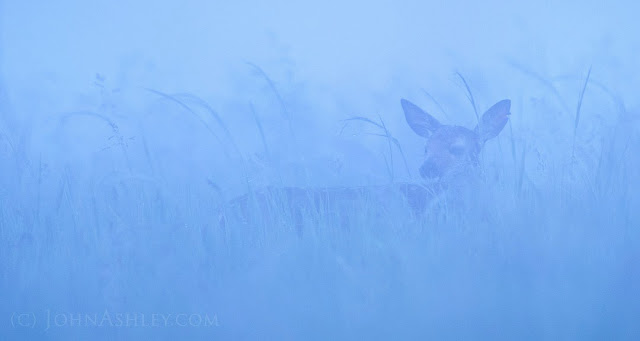Our blue mornings remind me that summer is silently drifting towards fall in the valleys around western Montana. Fog frequents these mountains when the rising humidities of late summer meet the falling temperatures of early fall.
 The ground looses heat rapidly on clear and calm nights, which effectively cools the lowest layer of air. Cold evening air can't hold as much water vapor as warm daytime air, and the combination of humidity and temperature that makes water vapor turn to water droplets (at a constant barometric pressure) is called the "dew point." Dew is water that precipitates out of the air onto a solid surface, while fog is composed of water droplets that precipitate out of the air and remain suspended. Fog is really just a ground-level stratus cloud.
The ground looses heat rapidly on clear and calm nights, which effectively cools the lowest layer of air. Cold evening air can't hold as much water vapor as warm daytime air, and the combination of humidity and temperature that makes water vapor turn to water droplets (at a constant barometric pressure) is called the "dew point." Dew is water that precipitates out of the air onto a solid surface, while fog is composed of water droplets that precipitate out of the air and remain suspended. Fog is really just a ground-level stratus cloud.The type of fog that we get in the valleys is radiant fog, caused by this radiant heat loss at night. When the sky stays clear, the morning sun is usually enough to warm the foggy air layer back up above dew point, and the fog magically disappears. Sometimes there's not enough warming (sun) or mixing (wind), and the fog hangs around for days that can feel more like weeks. Those are the crisp fall mornings when I'm glad I can still drive snow-free roads up into the mountains, above the fog - and also feel relieved that I no longer live in foggy Missoula.
 |
| Autumn fog begin to form at 3 a.m. in low-lying areas of Glacier's North Fork Valley |


